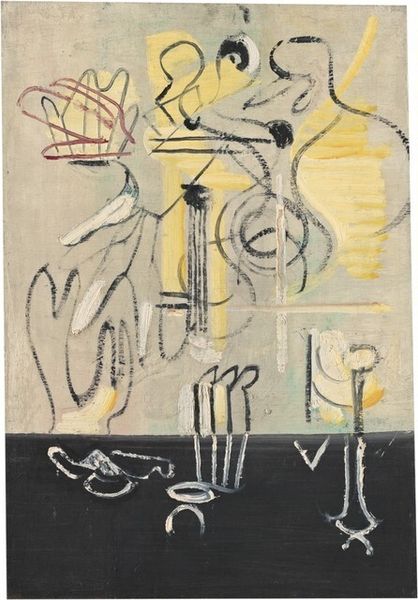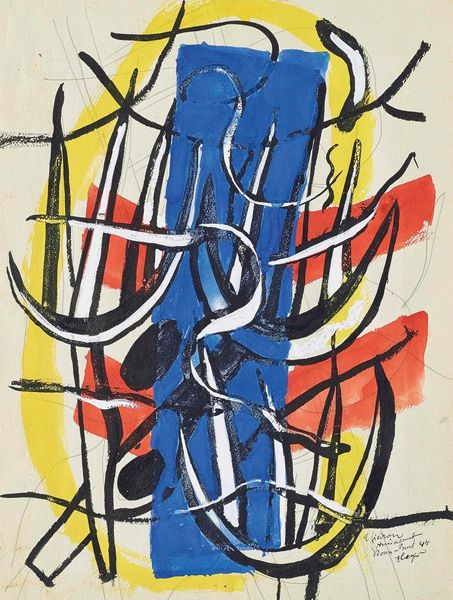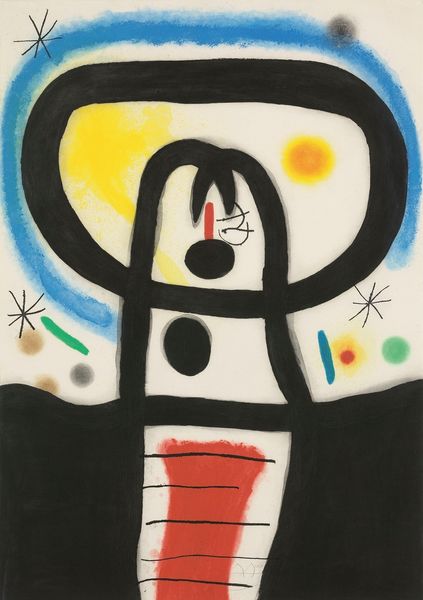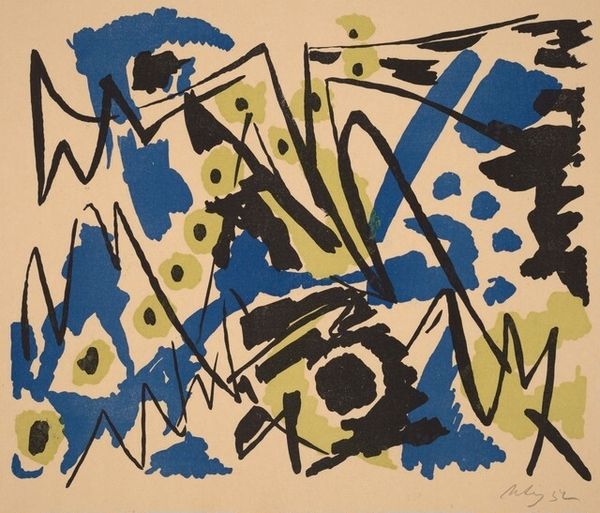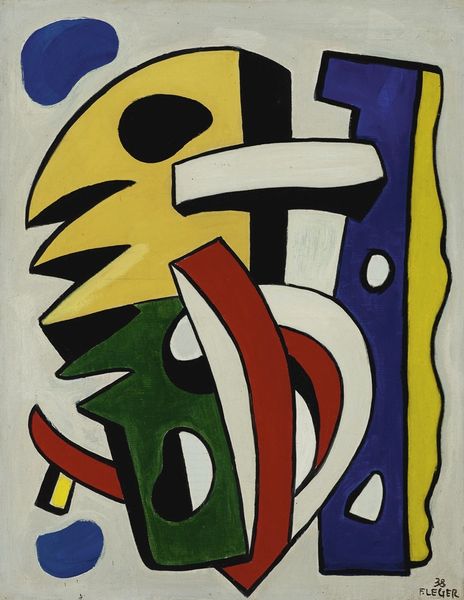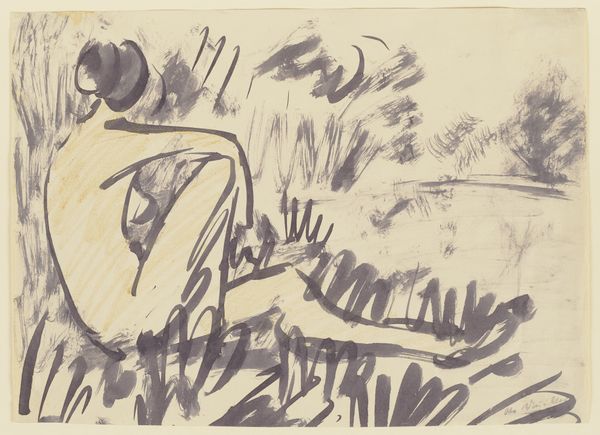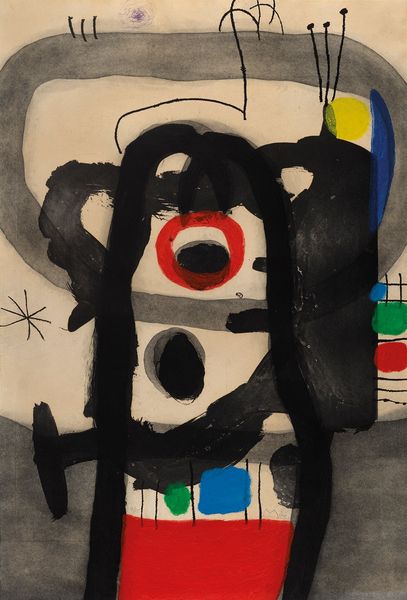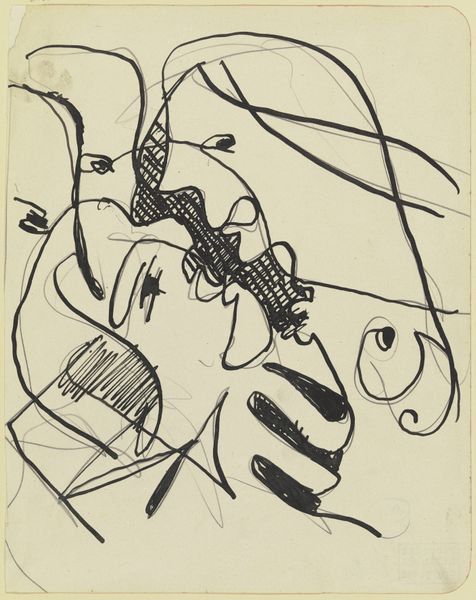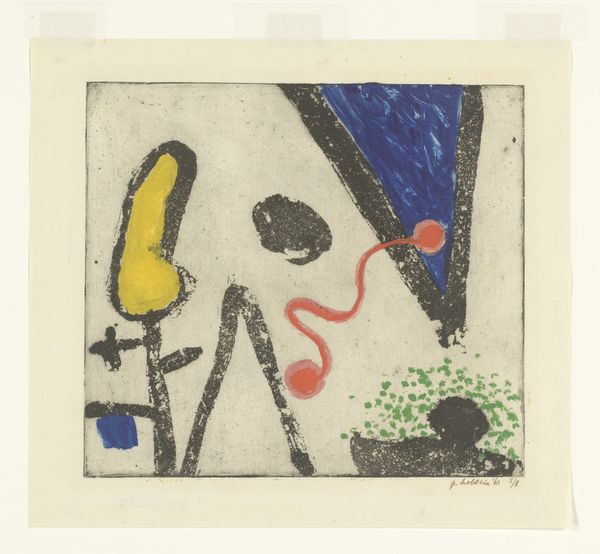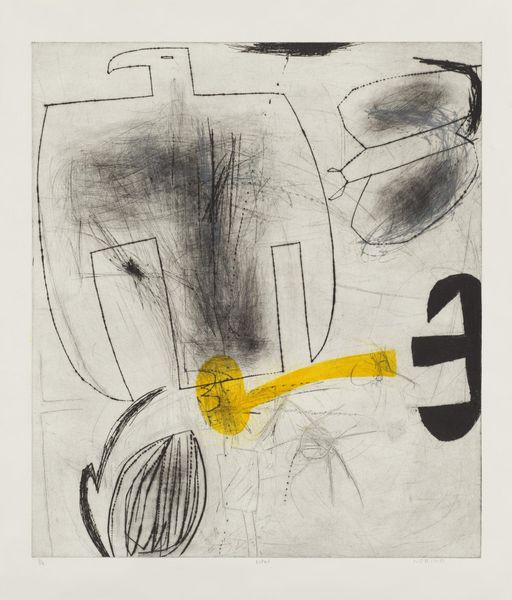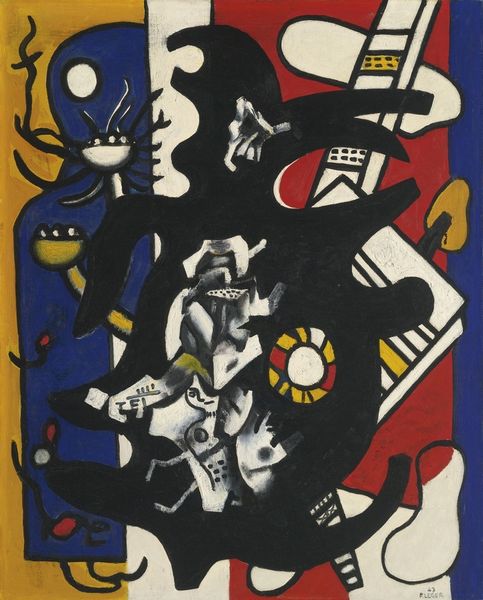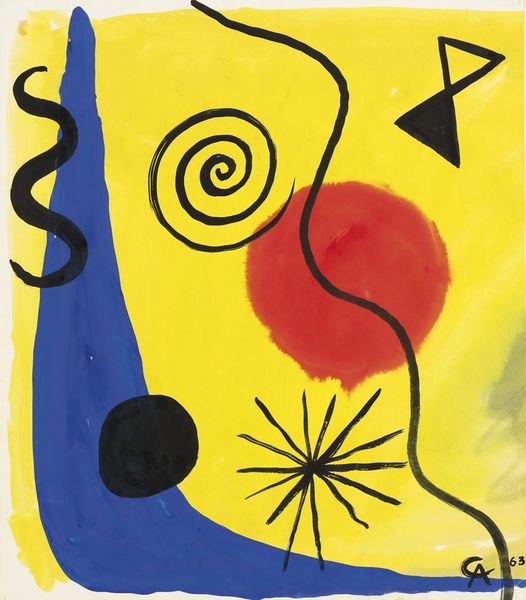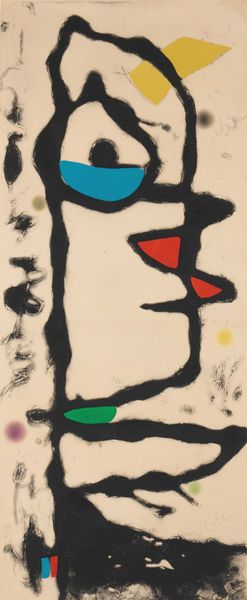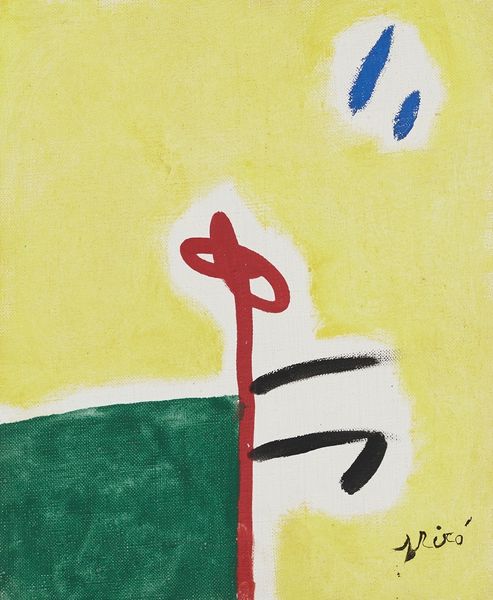
painting, acrylic-paint
#
painting
#
caricature
#
acrylic-paint
#
abstract
#
form
#
spray can art
#
geometric
#
line
#
surrealism
#
modernism
Copyright: Modern Artists: Artvee
Editor: Here we have Joan Miró’s "Femme entendant chanter le coq aux éclats violets," painted in 1972 with acrylic on canvas. It’s so… playful! The forms are quite simplified, almost like a child’s drawing. What do you see in this piece? Curator: It strikes me as a bold assertion of the feminine, reclaiming power through surrealist language. Notice the fragmented body, the vibrant yet detached colours – it disrupts the male gaze, turning the female form into a site of abstract resistance. Consider also that Miró created this after a long period of Franco’s fascist rule in Spain. Could this be a subversive act, celebrating freedom and the feminine voice after years of oppression? Editor: Subversive, really? It feels so… whimsical! Curator: But consider how whimsy can be a form of rebellion! The simplification, the seeming naivete…these could be tactics to bypass censorship, to critique societal norms under the guise of the playful. Think about the rooster – a symbol often linked with masculinity – and how its song is received by the ‘femme’. What does it mean for her to hear its crowing ‘aux éclats violets’ – with bursts of violet? How might this contrast with traditional notions of gender? Editor: I guess I hadn't considered the historical context so deeply. That does add another layer. Is it typical for Miró to use art as a commentary on political issues? Curator: Absolutely. Miró often explored themes of Catalan identity, the trauma of the Spanish Civil War, and the struggle for individual freedom. His art is not merely decorative; it's a powerful form of visual poetry that speaks to the complexities of the human condition. By positioning women and symbols of the oppressed in central roles, he offered nuanced critiques of power. What are your thoughts now? Editor: I see it very differently now! I learned that even the most seemingly abstract forms can be tied to the times the artwork was produced, telling an important social narrative.
Comments
No comments
Be the first to comment and join the conversation on the ultimate creative platform.
